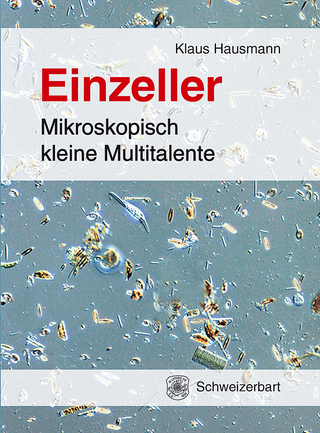
Spatial Omics
Academic Press Inc (Verlag)
978-0-323-99686-0 (ISBN)
- Noch nicht erschienen
- Versandkostenfrei
- Auch auf Rechnung
- Artikel merken
Cellular and molecular biologists will benefit from the detailed experimental setup information included in this comprehensive book. Computational biologists and computer scientists involved in biological visualization problems can also use this book as a guide to interpret and analyze experimental data.
Dr. McGourty is a lecturer in the Chemical Sciences department at the University of Limerick (UL). Kieran undertook his undergraduate studies at UL, in Industrial Biochemistry, where he worked with Dr. Jakki Cooney and Dr. Todd Kagawa. In 2006, motivated by these experiences, he went on to attain a Wellcome Trust funded PhD working with Prof. David Holden FRS, Imperial College London, studying the molecular basis of infection. During this time, Kieran published several high impact papers on the intracellular interaction of Salmonella Typhimurium with the host before changing field from cellular microbiology to cell biology. His research group primarily focusses on the architectures of both diseased and healthy tissues. They are particularly interested in understanding the molecular mechanisms behind cellular quiescence, proliferation, and differentiation and how these fundamental cellular behaviors can be governed by microenvironmental interaction. This research focus is a culmination of his research experience to date in some of the world’s top institutions and utilizes a multidisciplinary combination of approaches, including multidimensional spatial ‘omics’ analysis, image cytometry, biomechanical characterization, flow cytometry and in vitro scaffold design in addition to standard biochemistry.
Introduction 1. Comment on Spatial Transcriptomics Landscape 2. Comment on Human Cell Atlas and CZI Initiatives Targeted dissection coupled with gene expression 3. Manual dissection, digestion and enrichment followed by NGS 4. General comment introduction to cell targeted NGS 5. Laser capture microdissection (LCM-SEQ) 6. Laser capture microdissection with (geo-seq) 7. Serial cryo-sectioning TOMO-SEQ 8. In-vivo transcriptome assessment (TIVA)
In-situ hybridization and imaging-based approaches 9. Single-Molecule RNA fluorescence in situ hybridisation (smFISH) 10. Multiplexed Error-Robust hybridisation technology (merFISH) 11. Sequential Fluorescence In-Situ Hybridisation (seqFISH/seqFish+) 12. Ouroboros smFISH (osmFISH) 13. RNAscope (RNAscope) RNAscope Hiplex 14. Fluorescent in situ RNA sequencing 15. In situ transcriptome accessibility sequencing (INSTAseq) and Barcode in situ Sequencing (BaristaSeq)
In situ mRNA capture and next generation sequencing 16. Slide-Seq 17. High-definition spatial transcriptomics 18. Nanostring digital spatial profiling 19. APEX-Seq 20. Microfluidic barcoding 21. Targeted cell isolation and profiling (Probe-Seq)
Emerging multimodal spatial imaging 22. DNA microscopy New class of imaging. Amazing. 23. Mass-cytometry coupled to multimodal analysis
In-silico tools for spatial transcriptomics 24. SpaceTx and Starfish (amalgamation of imaging-based approaches) 25. Oligonucleotide-based spatial barcoding followed with NGS. Hierarchical Barcoding 26. Incorporation of labelling approaches and multi-omics 27. Incorporation of histological data/tissue atlas generation 28. Downstream analyses incorporating lineage multi-modal data incorporation
| Erscheint lt. Verlag | 1.6.2024 |
|---|---|
| Verlagsort | Oxford |
| Sprache | englisch |
| Maße | 191 x 235 mm |
| Themenwelt | Naturwissenschaften ► Biologie ► Zellbiologie |
| ISBN-10 | 0-323-99686-8 / 0323996868 |
| ISBN-13 | 978-0-323-99686-0 / 9780323996860 |
| Zustand | Neuware |
| Haben Sie eine Frage zum Produkt? |
aus dem Bereich


